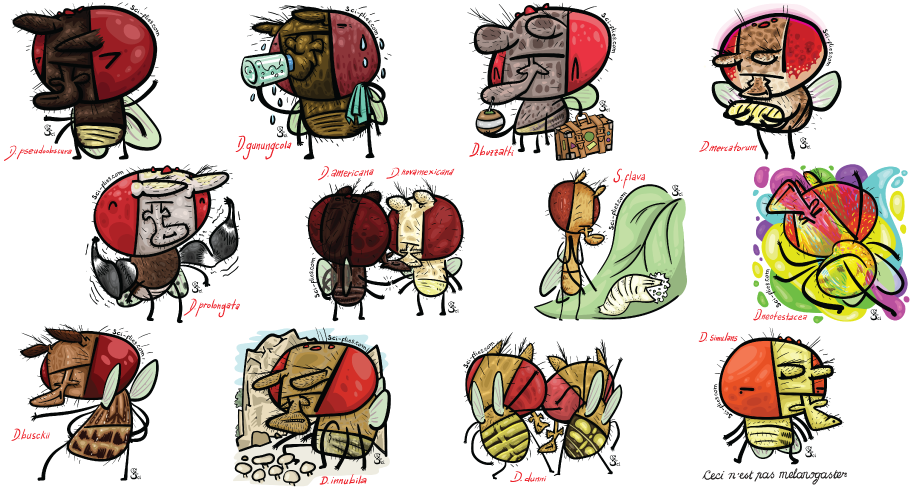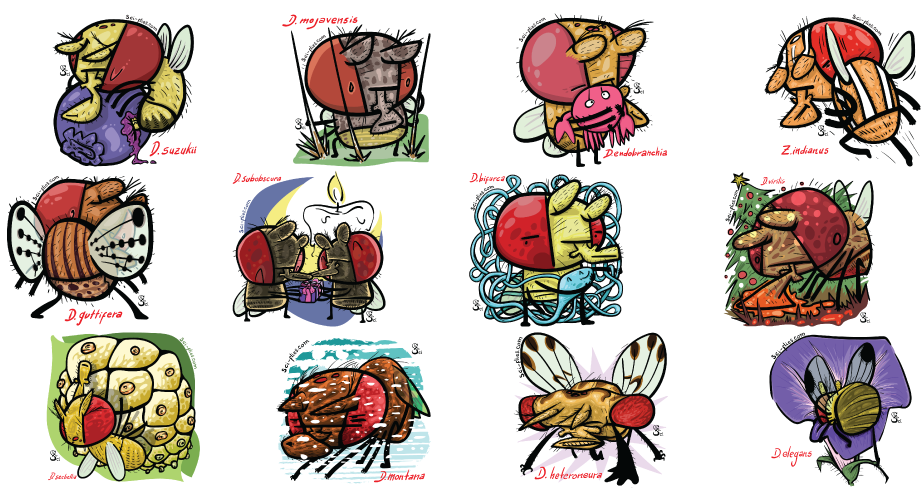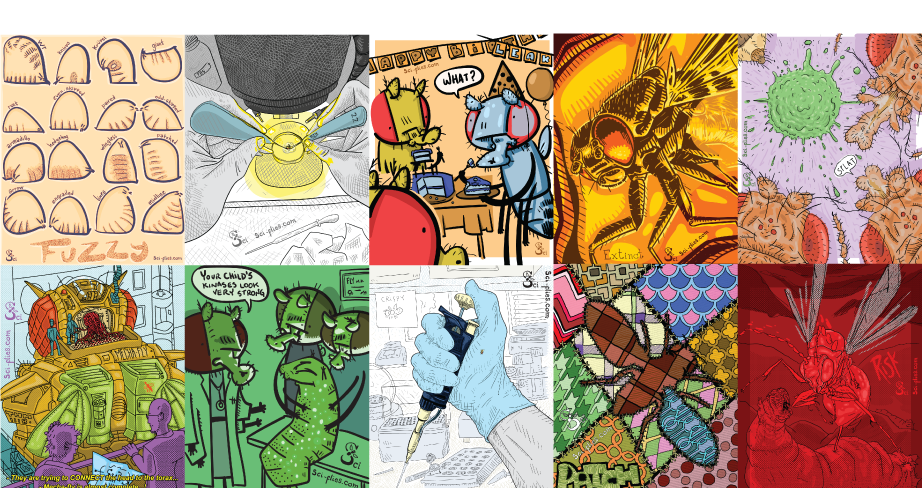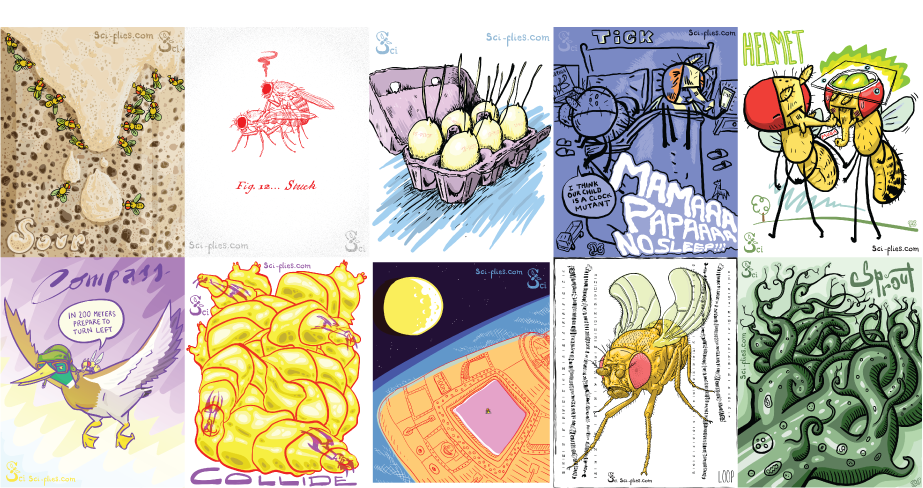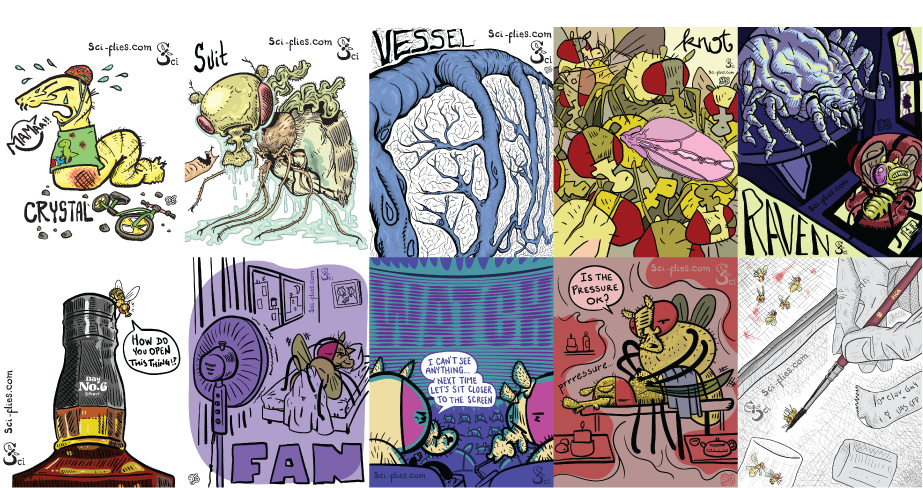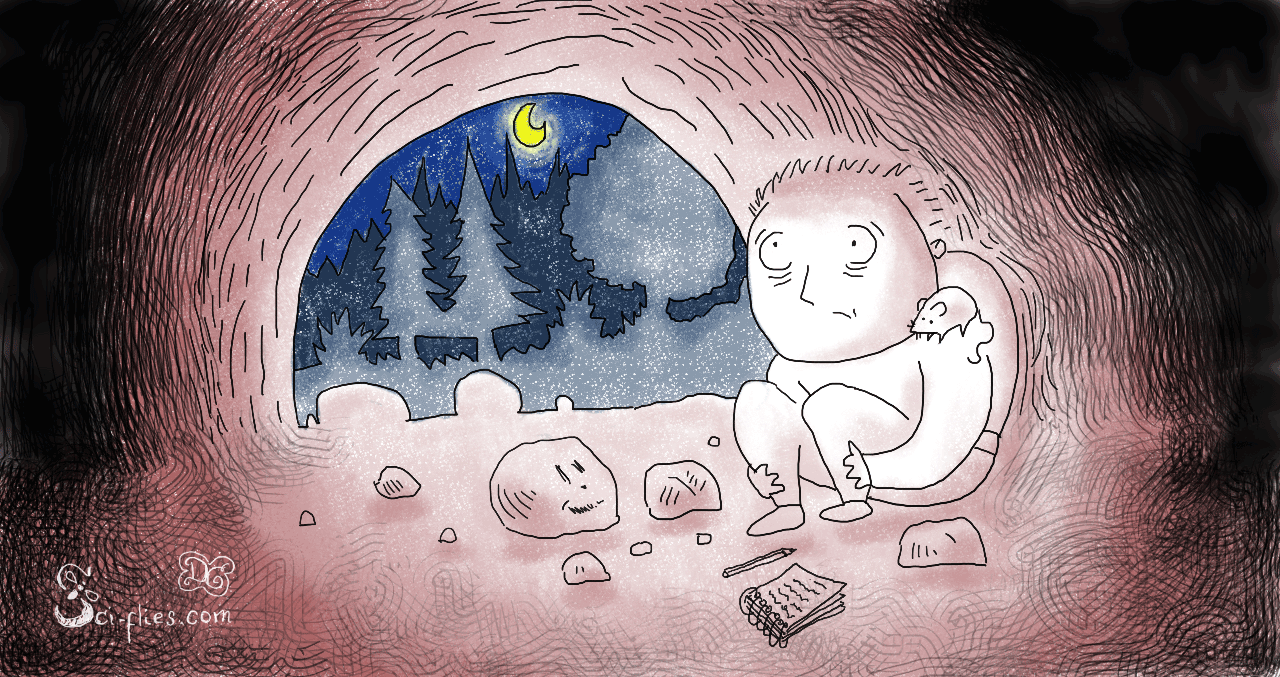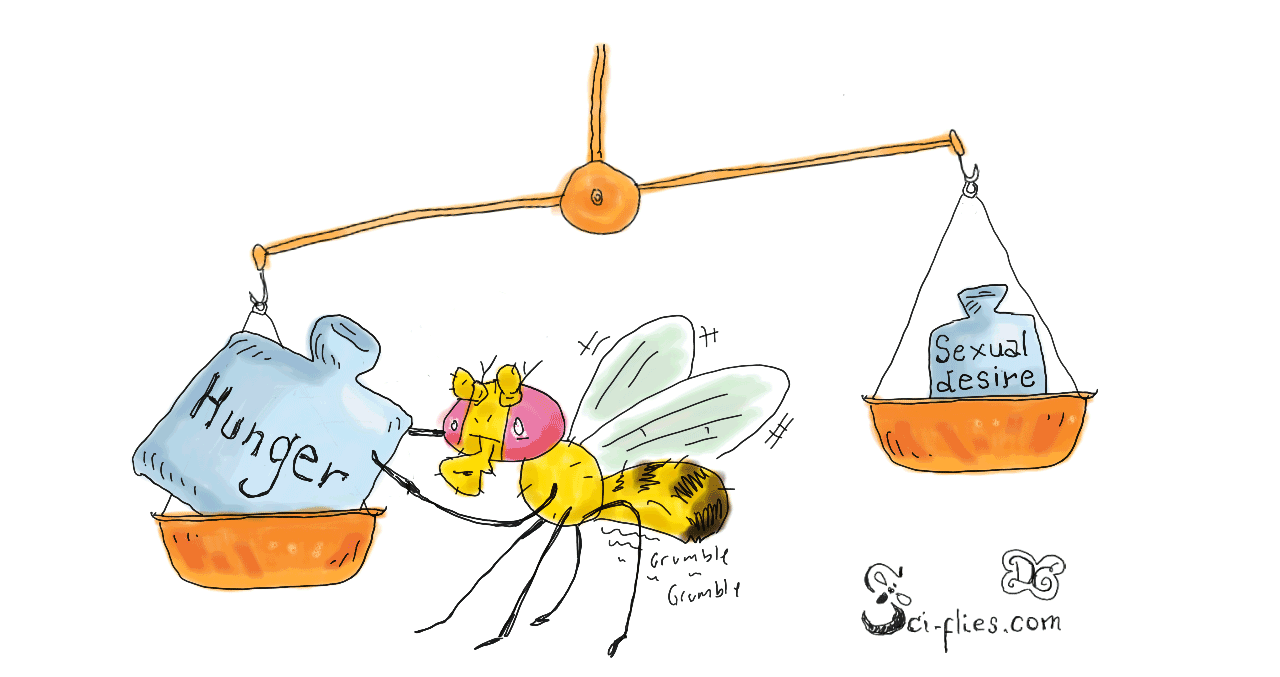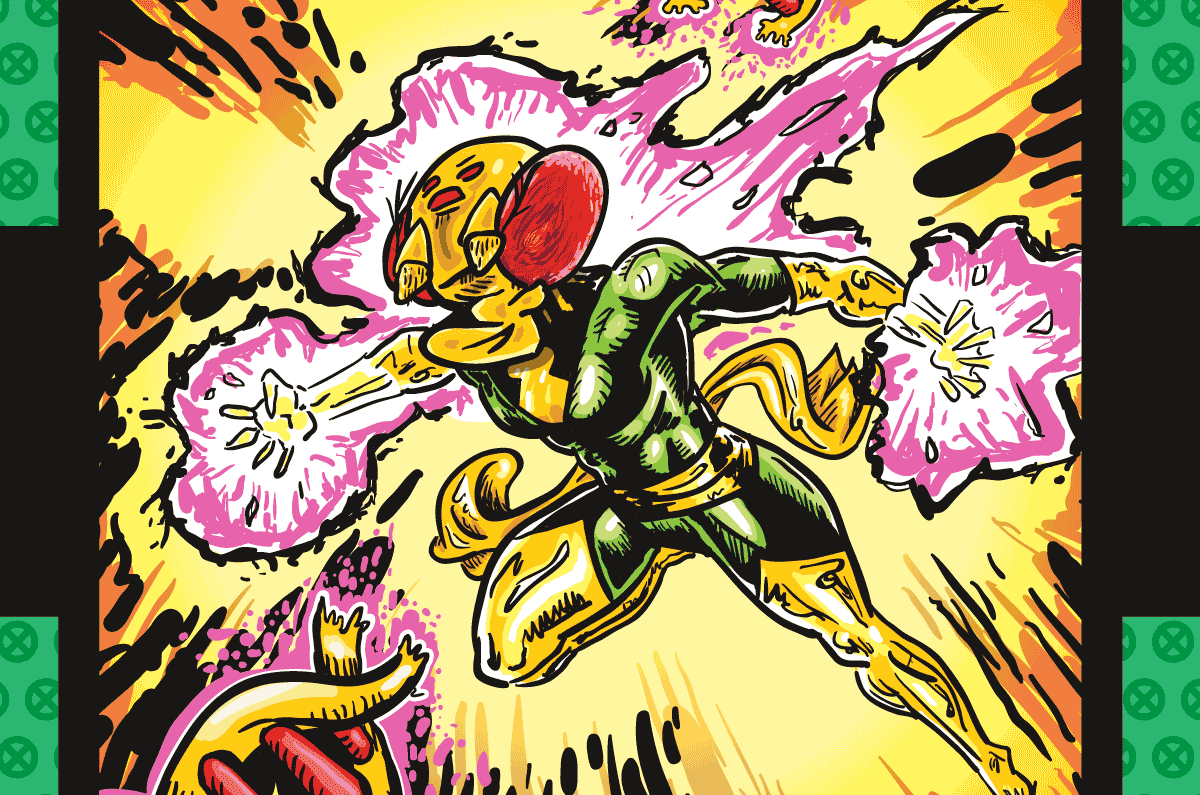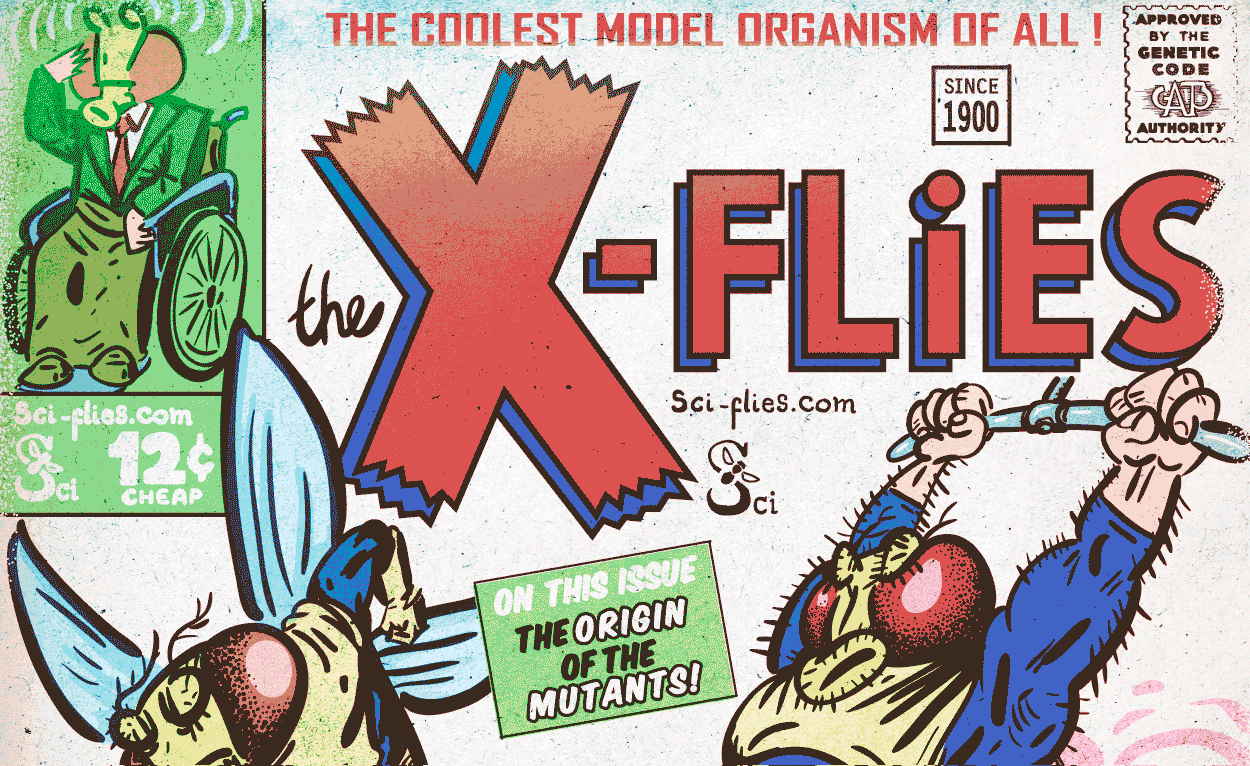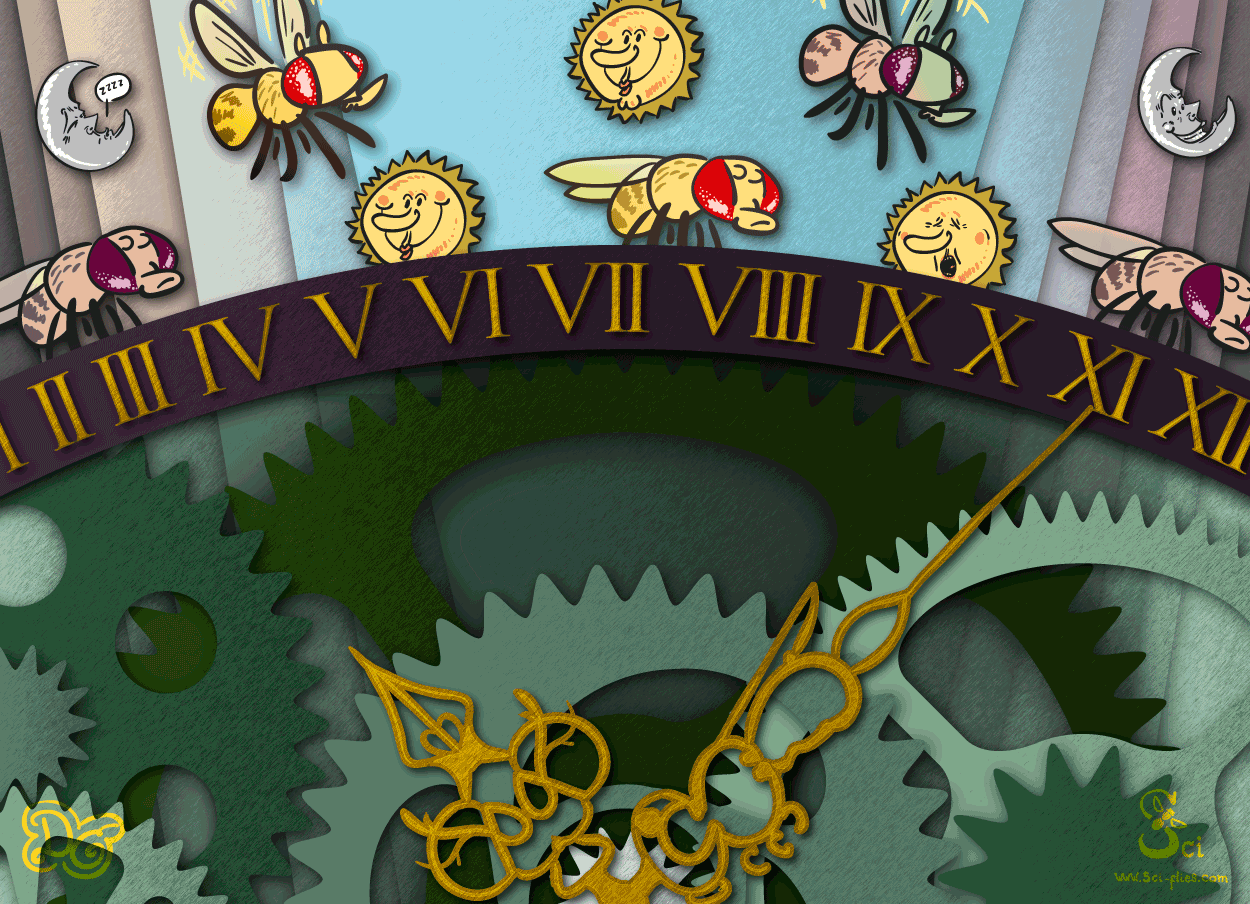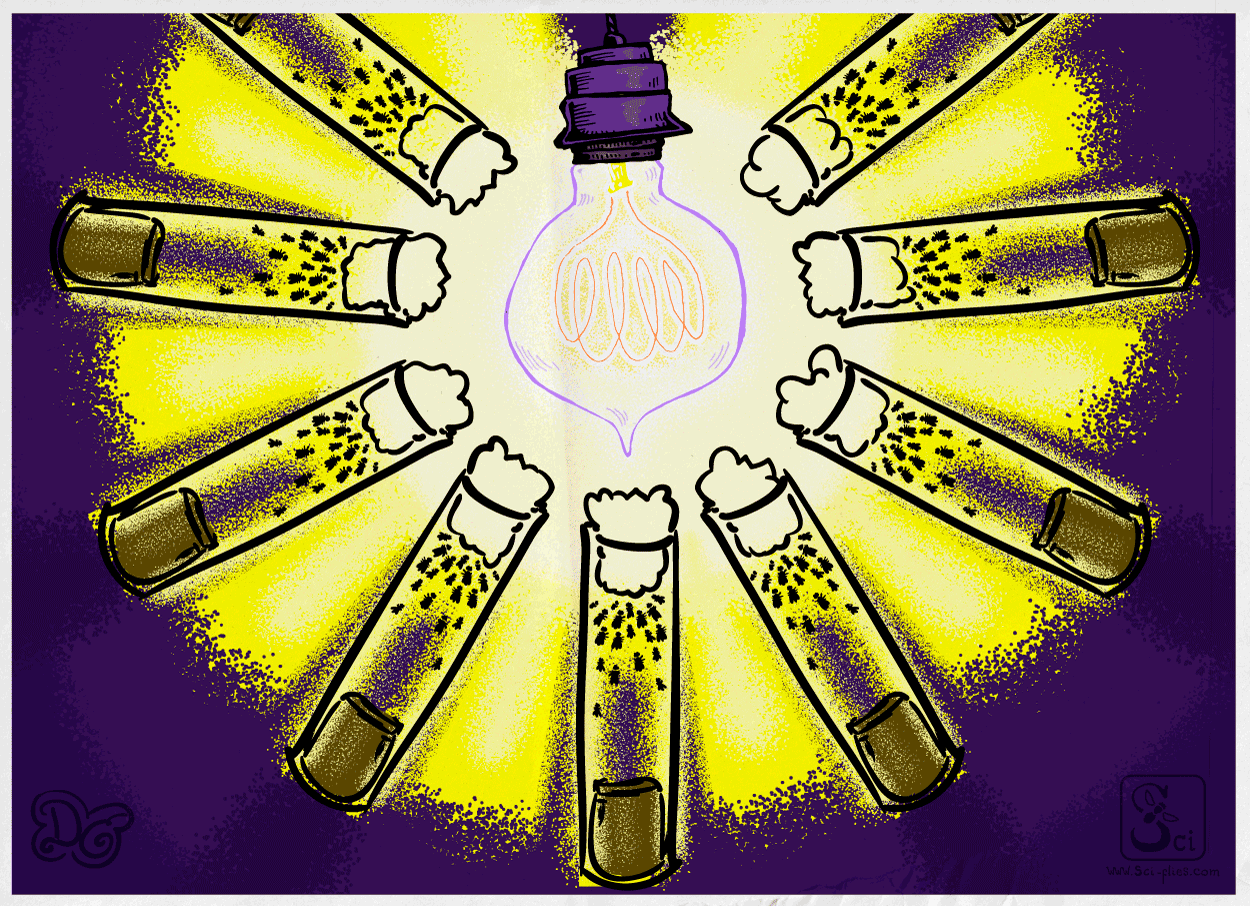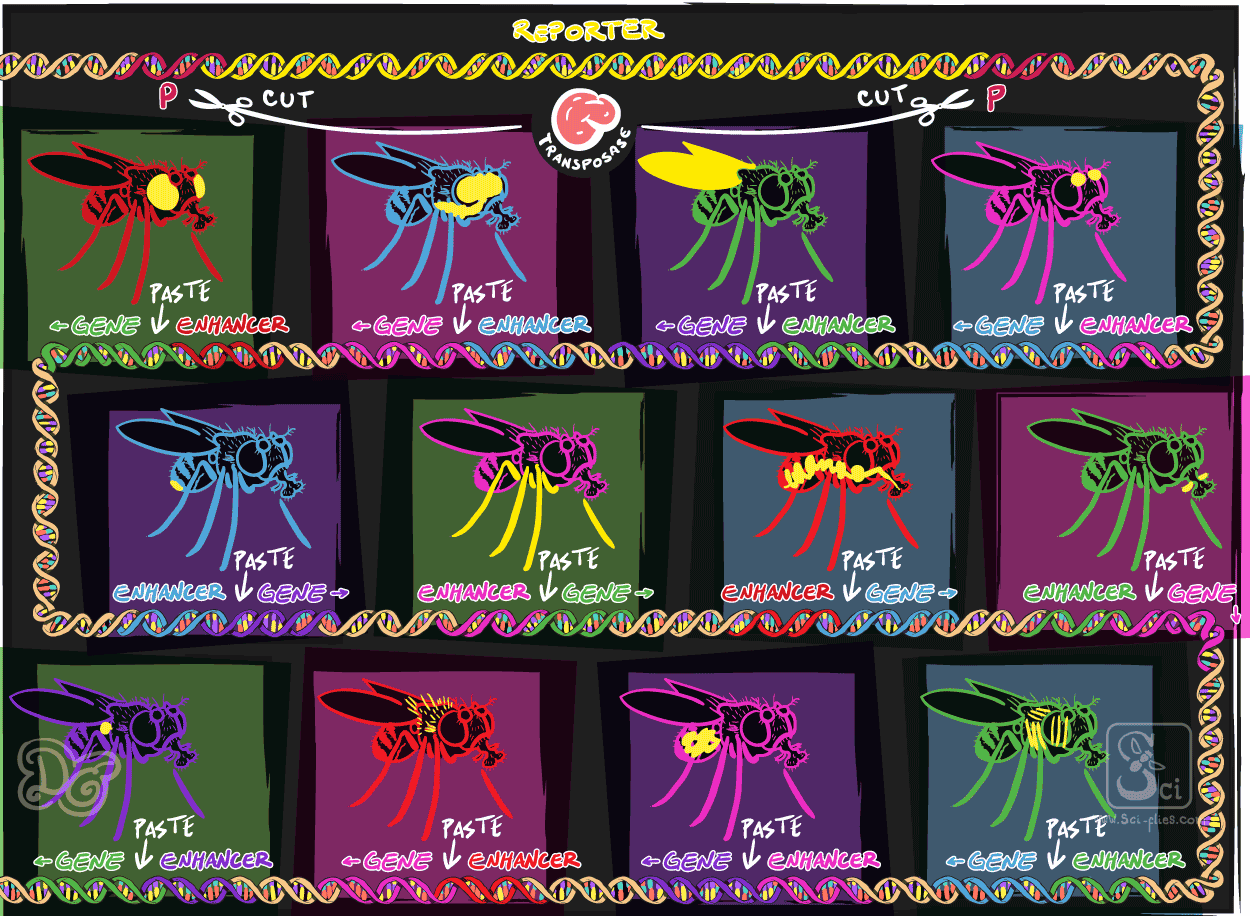DNA And Genetic information
Today we will talk about DNA and genetic information. We’ll do it in a conceptual way, without going into the details of the molecules involved but focusing on what is the information DNA carries, and how it is maintained and expressed.
DNA in colors

We always hear that DNA contains all the information to make us. But, what does it inform about? How is this information coded? How is the information reproduced and maintained? How is this information arranged?
DNA is a long linear string of four different types of units joined one after the other. These units are not repeated regularly along the string and information is coded in the way these four units are arranged in the line. Analogous to the letters in our alphabet, the order of the units defines the message (this works as a 4 “letter” alphabet).
These four different units can be separated in two pairs of units that will always complement each other (as are their colors in the drawing, orange-blue and yellow-violet). A complete molecule of DNA is composed of two lineal sequences of these units that complement each other.
Each string is the reverse and complementary sequence of the other.
The “units” that compose DNA are molecules known as Nucleotides. There are four types Adenine complements Thymine, and Guanine complements Cytosine. These are the famous base pairs A-T, C-G.
The nucleotides are formed of three types of molecules, a nitrogenous base (which gives it its identity, hence their name) a five carbon sugar and a phosphate. The string of DNA is formed by the nucleotides bonded to each other through the phosphate and the sugar, making the “backbone” of the molecule allowing for the bases on one string to be exposed to interact with the bases on the other string. The complimentarity is achieved through certain molecular characteristics of the nitrogen base.
Due to molecular characteristics of the nucleotides and the DNA molecule, the double-string I described is in fact a double-helix, the two molecules spiral throughout their length leaving the backbones on the outside and the paired bases on the inside.
DNA Replication
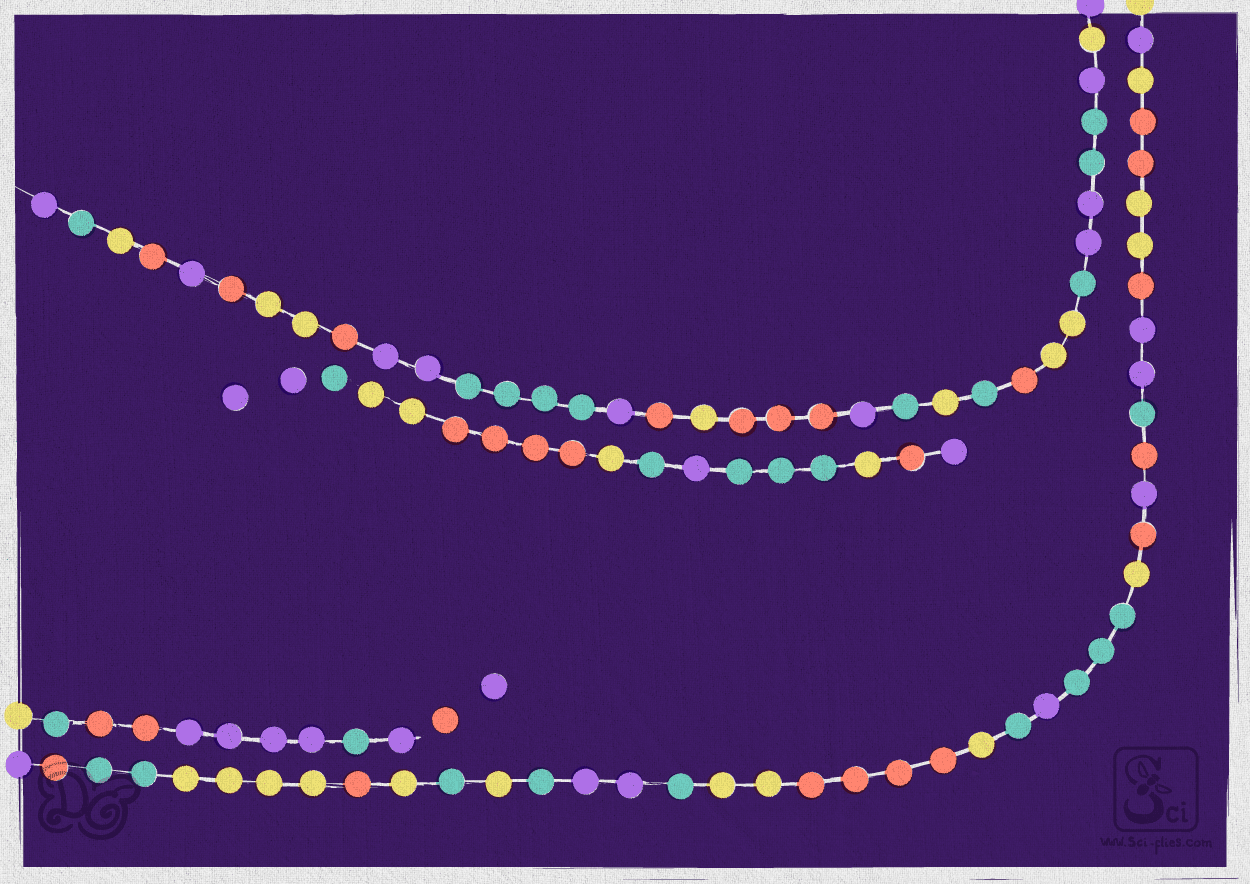
Our beings are composed of millions of cells. All the time there are cells dying and also new ones being produced. Also, all cells in every organism come from a single one that divided and generated different types of cells (as we saw in the life cycle of the fly). Since the nucleus of every cell has a whole copy of all the DNA, when a new cell is being formed it is necessary to make a copy of all the DNA.
The structure of the molecule allows for its easy duplication. Since the two complementary strings contain the same sequence (but in reverse from each other and composed of complementary units) two whole double-strings can be obtained by separating the two original strings and using them as template to build a new complement for each of them.
So replication proceeds by spliting the two strands and making a new string by bonding units in line following the order of their complements in the old string that is used as template
In this way the data base contained in DNA can be copied whole and transmited to a new cell.
DNA Transcription and RNA
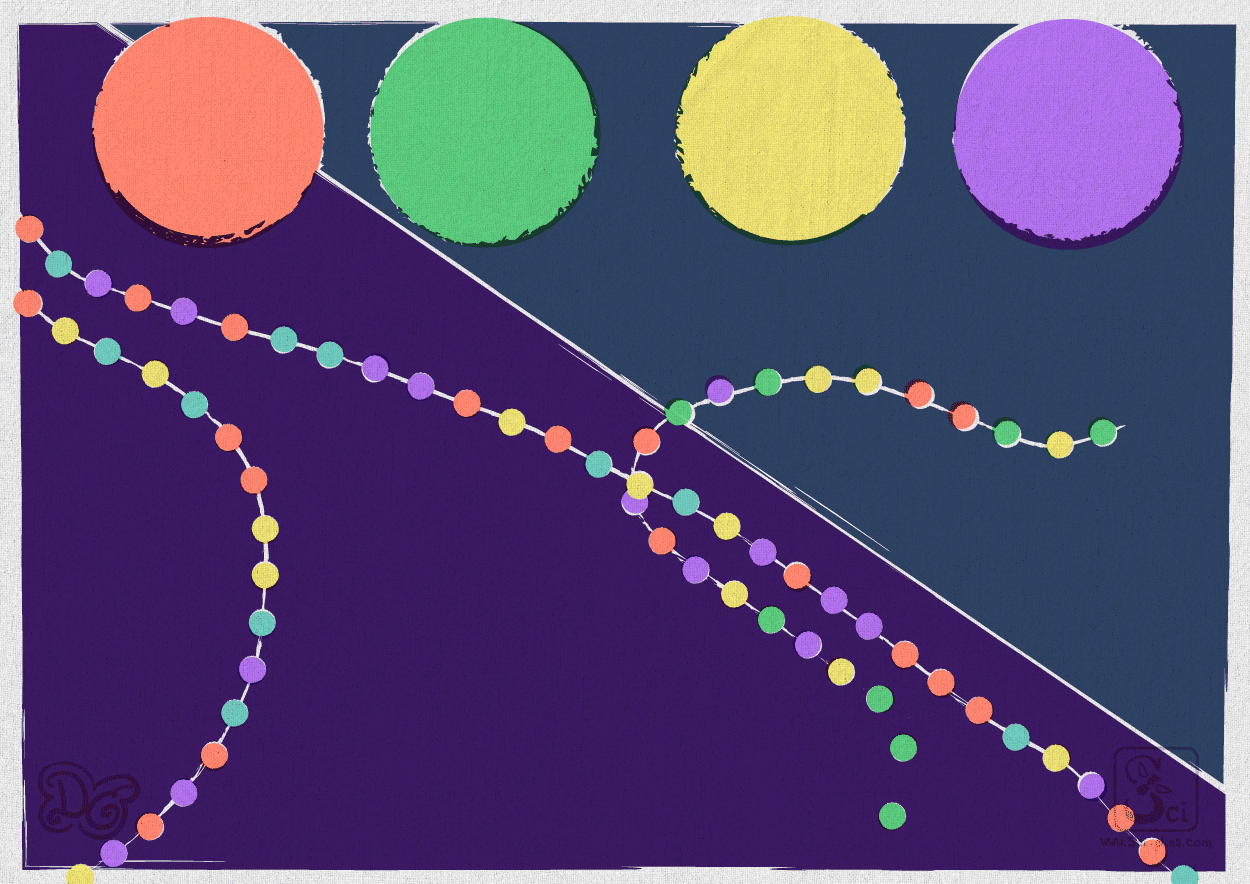
But, what is this information for? Why are we copying and transmiting it? What is its use?
The sequence of units in the string is not all informative. There are stretches along the sequence that contain information and stretches that are just repetitive filler.
DNA is a data storage unit located in the nucleus of the cell. The message in some of the informative stretches needs to be transcribed to be put to use. From these stretches a new molecule will be made that can be actually used. This molecule is RNA.
Like DNA, RNA is a string of four different types of units, but it is not double, it is a single-string. Also one of RNA’s units is different from those of DNA (so one of the complementary pairs is different).
To transcribe DNA into RNA, the double-string will be separated and the RNA string will be built following as instruction the sequence on one of the DNA strings. There are specific sequences in DNA that signal where the RNA coding stretches begin.
As I said, not all the informative stretches are transcribed. Some informative stretches of DNA are signals that allow the regulation of when, where and how information is going to be transcribed.
In RNA the nucleotide pairs are Adenine-Uridine (instead of Thymine) and Guanosine-Cytosine. Another important difference is that the five-carbon sugar in the nucleotides of RNA is different than the one in DNA.
RNA does not form a double helix, but the nucleotides within the single-string of RNA interact with each other, forming the pairs and giving the molecules complex three dimensional functional structures.
Translation and proteins
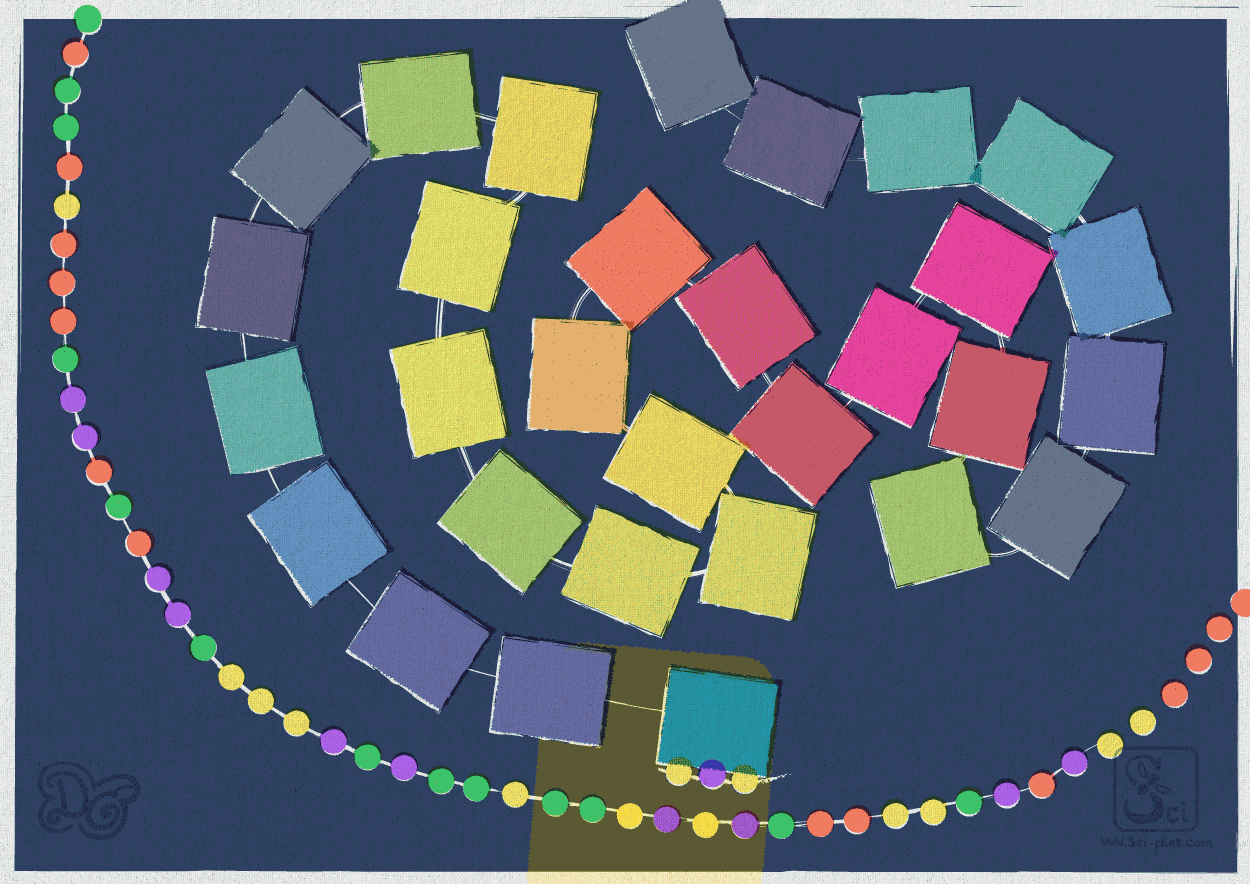
While DNA sits in the nucleus of the cell, most RNA is taken outside of the nucleus to be used. How is it used?
There are several types of RNA but all are geared towards producing another type of molecules called Proteins.
Proteins are a string of another type of units, and there are 20 of those. So the message from one language, the language of DNA and RNA with its 4 units has to be translated to the language of proteins that has 20.
For there to be a translation there has to be an equivalency, a key or code with which to decrypt the message in one language into the terms of the other.
In this case the code is composed of series of three units of the RNA system (a triplet) that signify one specific unit of the Protein system. The four elements in the RNA system can form 64 different combinations of three, so each element of the Protein system is represented by more than one triplet (and some specific ones signal the end of the translation).
Translation is carried out by reading a string of RNA that contain the message, triplet by triplet. The reading is done by smaller RNAs that serve as adaptors, and have a complementary triplet to that on the message on one side, and bring the corresponding Protein system unit on the other.
The units that form proteins can interact with each other within the string of units based on their chemical characteristics and form very complex three dimensional structures. There are small proteins of a few units and very massive ones of thousands. Also big complexes can be formed with several proteins joined together. The combinations are endless, so the structural diversity is also huge. And the structure is what gives protein their function.
The translation code is called the Genetic Code, and each triplet of nucleotides is called a Codon. There are amino acids (the Protein system units) that are represented by more codons than others, but in general they are all represented by more than one (except the start which is always the same amino acid coded by only one codon, and another one), thus it is redundant and is called a “degenerate code”. The genetic code for nuclear DNA is almost universal throughout living beings, although some microbial organisms have a different code.
There are several types of RNA that will have different functions.
There are RNAs involved in translation. The messenger RNA (mRNA) is the one actually going to be translated. Ribosomal RNA is going to be part of the machinery used for translation. Transfer RNA (tRNA) is used as adaptor between the message in RNA and the translation product (it contains the anti-codon to match the codon in the messenger).
There are many types of small RNAs that serve in the process of getting mRNA ready for use, since mRNA is not ready to be used when it is transcribed and has to be previously edited.
Last, there are many RNAs involved in the regulation of translation. These are small RNAs that serve to guide machinery to eliminate or silence specific mRNA.
The information to make all of them is contained in DNA.
After that, Proteins can do everything. There are proteins that will form the structure of the cell. Other proteins will process and transform chemicals to generate energy or store it. Others will produce building material to make more cells. Others will serve as signals between cells or inside it, while others will serve to receive those signals and communicate it to other proteins that will produce and effect. Other proteins serve as holes to let things get in and out of cells.
Together with RNAs, Proteins will form the machinery that will carry out the replication and transcription of DNA and the translation of RNA.
So in summary, DNA is a data base that contains information to make RNA and ultimately, Proteins. It contains the blueprint information to build them and the information to regulate the building processes. This information is read and instructions are carried out by RNA and Proteins.
That is a way cooler conundrum than the one about the egg and the chicken. Can you think about what came first? DNA, RNA or Protein?
Cool External videos
These videos are animated representations of the processes explained here. They maintain the proportions between the elements involved better than my drawings (which are an artistic expression). I recommend trying to identify in the videos the elements mentioned in my text and in the links throughout the text.
